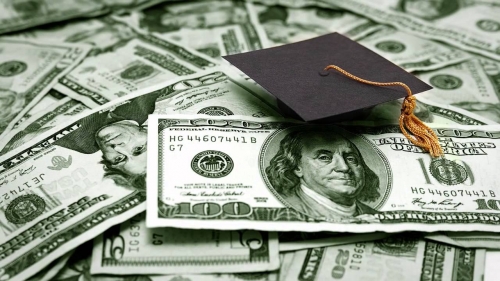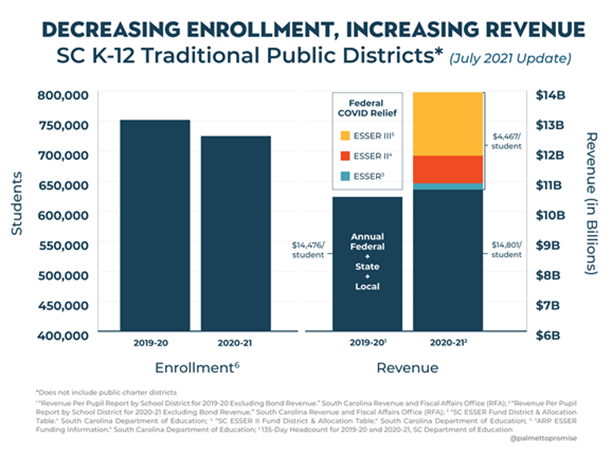More Money, Fewer Students
Palmetto State schools are seeing what South Carolina’s Department of Education has dubbed an “unprecedented” influx of money from the federal government. Between the Elementary and Secondary School Emergency Relief (ESSER) funds in the CARES Act, CARES II, and American Rescue Plan, the SCDE and South Carolina’s 81 school districts will receive a whopping $3.3 billion in federal “emergency” COVID aid.
To put that in perspective, according to new data from the National Education Association (NEA) for 2020-2021, total receipts for South Carolina public schools (state, federal, and local combined) were $13,546,812 (up from $12,977,250 the year before). Only 7 other states had a higher percentage increase year-over-year than South Carolina according to the NEA.
The state budget remained frozen throughout 2020-21 due to revenue uncertainty caused by COVID, but just last month the General Assembly passed a new spending plan for the 2021-22 fiscal year.
That plan included over $350 million in new K-12 education spending, including line items for teacher raises, new instructional materials, rural school construction, and expanded full-day 4K among others. Senate Finance Committee Chairman Hugh Leatherman told The State newspaper, “If you look at this budget, you can almost call it an education budget for all the things we did for education this year.”
On June 18, the SC Department of Education submitted its plan to spend the latest iteration of ESSER funding. While this plan includes many commendable initiatives, such as reopening all schools in person, recruiting teachers to rural and underserved schools, and helping students recover from learning loss, much remains to be seen in terms of how individual districts will actually prioritize their spending…and whether there will be measurable gains in student learning reported when they do.
Sadly, it is a near certainty that money will be pumped into outdated programs and administrative bloat, the same old practices that have left South Carolina’s education system lagging in almost every national ranking.
While our education spending keeps climbing, the trends that we reported in April continue: fewer and fewer students are enrolling in the traditional public school system, instead opting for public charter schools, homeschools, or private education.
To put finer point on it: we are pouring massive amounts of new money into a broken system, even as the number of students enrolled in that system declines.
South Carolina has a once-in-a-lifetime opportunity to change our education system for the better and benefit every student in the state, regardless of their zip-code or income level. That starts with getting dollars back into classroom by overhauling our complex, outdated funding formula.
It’s past time we worked to flexibly fund students and their individual needs instead of more “one-size-fits-all” programs and high-paid central office salaries. The future success of South Carolina’s children depends on it.







